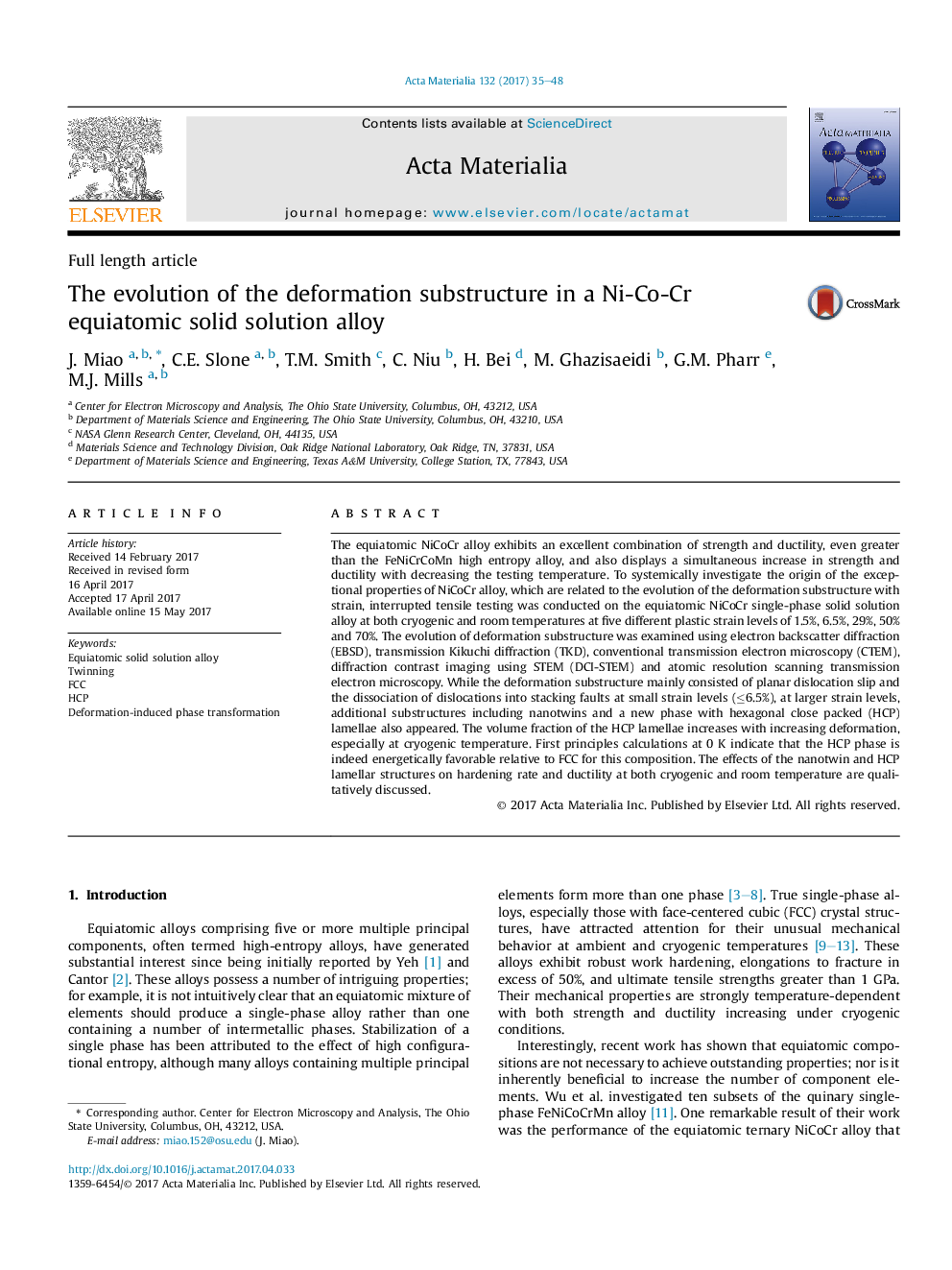| Article ID | Journal | Published Year | Pages | File Type |
|---|---|---|---|---|
| 5436142 | Acta Materialia | 2017 | 14 Pages |
The equiatomic NiCoCr alloy exhibits an excellent combination of strength and ductility, even greater than the FeNiCrCoMn high entropy alloy, and also displays a simultaneous increase in strength and ductility with decreasing the testing temperature. To systemically investigate the origin of the exceptional properties of NiCoCr alloy, which are related to the evolution of the deformation substructure with strain, interrupted tensile testing was conducted on the equiatomic NiCoCr single-phase solid solution alloy at both cryogenic and room temperatures at five different plastic strain levels of 1.5%, 6.5%, 29%, 50% and 70%. The evolution of deformation substructure was examined using electron backscatter diffraction (EBSD), transmission Kikuchi diffraction (TKD), conventional transmission electron microscopy (CTEM), diffraction contrast imaging using STEM (DCI-STEM) and atomic resolution scanning transmission electron microscopy. While the deformation substructure mainly consisted of planar dislocation slip and the dissociation of dislocations into stacking faults at small strain levels (≤6.5%), at larger strain levels, additional substructures including nanotwins and a new phase with hexagonal close packed (HCP) lamellae also appeared. The volume fraction of the HCP lamellae increases with increasing deformation, especially at cryogenic temperature. First principles calculations at 0 K indicate that the HCP phase is indeed energetically favorable relative to FCC for this composition. The effects of the nanotwin and HCP lamellar structures on hardening rate and ductility at both cryogenic and room temperature are qualitatively discussed.
Graphical abstractFigure optionsDownload full-size imageDownload high-quality image (406 K)Download as PowerPoint slide
